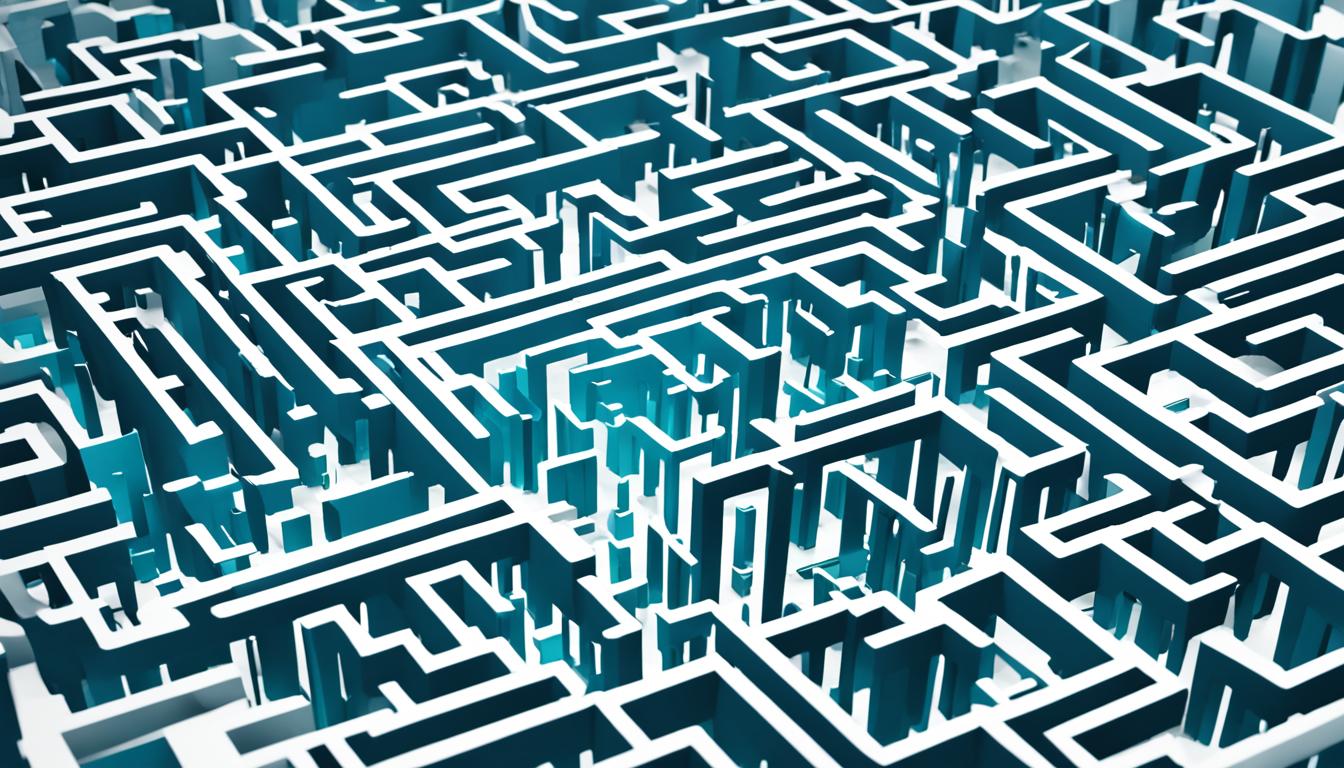Boost Your Efficiency with Top Productivity Methods

Are you tired of feeling overwhelmed by your workload? Do you wish you could accomplish more in your daily routine without burning out? It’s time to explore the world of productivity methods and unlock your true potential.
Productivity methods are not just empty promises or trendy buzzwords. They are proven techniques that can revolutionize the way you work, helping you manage your time effectively, streamline your workflow, and achieve your goals with ease.
From time management techniques and goal setting tactics to task prioritization tools and project management skills, there are countless strategies and systems designed to enhance your efficiency in both professional and personal realms.
In this article, we will delve into the top productivity methods and how they can transform your work life. Get ready to boost your productivity, optimize your workflow, and strike the perfect balance between work and personal life.
Key Takeaways:
- Productivity methods are powerful tools that can help you achieve more and manage your time effectively.
- By implementing productivity methods, you can improve your efficiency, reduce stress, and enhance work satisfaction.
- Measuring productivity is essential for businesses to track progress, set goals, and improve employee engagement.
- Top productivity methods include the Pomodoro Technique, Eisenhower Matrix, Agile Methodology, and Kanban System.
- Effective strategies such as workspace organization, task prioritization, and goal setting can further streamline your productivity.
The Importance of Productivity Methods at Work
Productivity methods are not just a mere set of techniques; they are the foundations upon which successful professionals build their careers. By implementing these methods, you can unlock your true potential, achieve optimal efficiency, and experience a profound sense of fulfillment in your work.
Efficiency is at the core of productivity methods. They enable you to manage your time effectively and make every precious moment count. Instead of aimlessly multitasking, productivity methods help you channel your focus towards high-priority tasks, minimizing distractions and maximizing output.
Time management is a key component of productivity methods. By adopting effective time management strategies, such as prioritizing tasks and allocating dedicated blocks of time for specific activities, you can conquer your workload with ease. This not only ensures that essential tasks are completed promptly but also provides you with a clear roadmap to accomplish your goals.
Additionally, productivity methods contribute to a significant reduction in stress levels. When you have a structured approach to your work, you feel more in control and less overwhelmed by the demands of your job. As a result, you are better equipped to handle challenges and can maintain a healthier work-life balance.
Moreover, productivity methods play a vital role in enhancing work satisfaction. When your efforts are aligned with your personal and professional goals, you experience a sense of purpose and fulfillment in your work. This intrinsic motivation fuels your drive to excel, propelling you towards success and professional growth.
Ultimately, the importance of productivity methods lies in their ability to empower you. They provide you with the tools and strategies needed to navigate through the complexities of your work, ensuring that you can achieve your highest potential while maintaining a sense of balance and satisfaction.

Measuring Productivity in Business
Measuring productivity is a critical aspect of running a successful business. It allows you to track your progress, identify inefficiencies, set and track goals, and improve employee engagement. By understanding how to effectively measure productivity, you can optimize your operations, enhance efficiency, and drive growth.
Why Measure Productivity?
Measuring productivity provides valuable insights into the performance of your business. It helps you identify areas that require improvement, set realistic goals, and gauge your progress towards achieving them. By understanding your productivity levels, you can make informed decisions to increase efficiency, eliminate bottlenecks, and maximize output.
Different Approaches to Productivity Measurement
Productivity measurement can vary depending on the nature of your work environment. Here are a few common approaches:
| Industry | Productivity Measurement |
|---|---|
| Manufacturing | Output ratio (e.g., units produced per labor hour) |
| Service Industries | Value of services per labor hour |
| Knowledge Workers | Task completion and quality of work |
| Remote Teams | Project completion and milestones achieved |
| Retail and Customer Service | Customer service metrics (e.g., response time, customer satisfaction) |
It’s important to tailor your productivity measurement approach to your specific industry and business goals. This ensures that the metrics you track align with your objectives and provide meaningful insights.
Using Productivity Measurements for Improvement
Productivity measurements should be seen as a tool for improvement and growth. Analyzing the data obtained from productivity measurements allows you to identify areas where processes can be optimized, resources can be reallocated, and employee engagement can be enhanced. Regularly reviewing productivity metrics and implementing changes based on your findings can lead to greater efficiency, increased profitability, and employee satisfaction.

Top Productivity Methods for Getting More Work Done
Are you looking to enhance your productivity and get more work done? Let’s explore some of the top productivity methods that can transform your work routine and boost your efficiency:
Pomodoro Technique
The Pomodoro Technique is a time management method that breaks work into focused intervals, typically 25 minutes each, known as “Pomodoros.” After each Pomodoro, you take a short break of 5 minutes to recharge. Every 4 Pomodoros, you take a longer break of 15-30 minutes. This technique helps improve focus, prevent burnout, and maintain high energy levels throughout the day.
Eisenhower Matrix
The Eisenhower Matrix is a powerful tool for task prioritization. It divides tasks into four quadrants based on their urgency and importance. The quadrants are: Do First for urgent and important tasks, Plan for important but not urgent tasks, Delegate for urgent but not important tasks, and Eliminate for tasks that are neither urgent nor important. This method helps you allocate your time and effort more efficiently.
Agile Methodology
The Agile Methodology is widely used in project management. It emphasizes flexibility, collaboration, and iterative development. The methodology involves breaking down projects into smaller tasks or sprints, setting clear goals and deadlines, encouraging continuous feedback and adaptation, and fostering effective teamwork. By adopting Agile practices, you can optimize productivity and deliver high-quality results.
Kanban System
The Kanban System is a visual task management approach that uses boards and cards to represent work items and their progress. The system helps you visualize your workflow, track tasks, and identify bottlenecks. With Kanban, you can easily prioritize tasks, monitor progress, and collaborate effectively with your team members. This method enhances transparency, efficiency, and overall productivity.
To implement these productivity methods successfully, assess your specific needs and choose the ones that align with your work style. Experiment with different approaches and customize them to suit your workflow. By incorporating these methods into your daily routine, you’ll be able to maximize your productivity, stay focused, and achieve your goals.

Streamlining Your Productivity with Effective Strategies
To boost your productivity and achieve more in your work, it’s essential to implement effective strategies that streamline your workflow. By incorporating these strategies into your daily routine, you can optimize your productivity and accomplish tasks more efficiently.
1. Workspace Organization
Organizing and decluttering your workspace is a simple yet powerful strategy for improving productivity. A clean and well-organized workspace reduces distractions, enhances focus, and enables you to locate tools and resources quickly. Consider implementing storage solutions, such as shelves and drawer organizers, to keep your workspace tidy and efficient.
2. Color Psychology and Workspace Decoration
Did you know that colors can impact your mood and productivity? Harness the power of color psychology by adding pops of vibrant or calming colors to your workspace. Blue promotes focus and concentration, green enhances creativity, and yellow boosts energy. Additionally, consider incorporating live plants into your workspace to improve air quality and create a more relaxing and rejuvenating environment.
3. Task Prioritization
Prioritizing tasks is crucial for managing your workload effectively. Start by identifying your most important tasks and tackle them first. Use techniques such as the Eisenhower Matrix to categorize tasks based on their urgency and importance. By focusing on high-priority tasks, you can ensure that you make progress on critical objectives.
4. Tackling Dreaded Tasks First
Dreaded tasks can often weigh on your mind and decrease productivity. Take control by tackling these tasks first thing in the morning when you have the most energy and motivation. By addressing the most challenging tasks early on, you’ll experience a sense of accomplishment and momentum that can carry you through the rest of your day.
5. Task Delegation
Recognize that you don’t need to tackle every task on your own. Delegating low-priority tasks or tasks that others can handle can free up your time and mental energy for more critical responsibilities. Delegate tasks to capable team members or consider outsourcing certain tasks to professional services when necessary.
6. Effective Email Management
Emails can quickly become overwhelming and time-consuming. Establish specific times during the day to check and respond to emails, rather than continually interrupting your workflow. Utilize email management techniques like the “inbox zero” approach, where you aim to clear your inbox regularly, or create folders and filters to prioritize and organize incoming messages efficiently.
7. Taking Short Breaks and Engaging in Physical Exercise
Studies have shown that taking short breaks throughout the day can actually enhance productivity and focus. Incorporating regular breaks, such as the Pomodoro Technique, can help prevent burnout and maintain mental clarity. Additionally, engaging in physical exercise during breaks can boost energy levels, improve mood, and increase cognitive function, all of which contribute to improved productivity.
8. Music for Productivity
Listening to music can be a powerful tool for enhancing focus and productivity. Experiment with different genres or curated playlists to find the music that helps you concentrate and get in the zone. Instrumental music or ambient sounds without lyrics tend to be less distracting, allowing you to stay focused on your tasks.
9. Changing Work Environment
Variety can spark creativity and increase productivity. Consider changing your work environment occasionally, whether it’s working from a different location, setting up a dedicated workspace at home, or simply rearranging your desk. This change of scenery can provide fresh inspiration and prevent monotony, enhancing your overall productivity.
10. Goal Setting
Setting clear goals is essential for effective task management. Define your short-term and long-term goals, and break them down into actionable steps. Use tools like SMART goals (Specific, Measurable, Achievable, Relevant, Time-based) to ensure your goals are well-defined and achievable. Regularly review your progress and adjust your goals as necessary to stay on track.
| Strategy | Benefits |
|---|---|
| Workspace organization | – Reduces distractions – Enhances focus – Improves efficiency |
| Color psychology and workspace decoration | – Influences mood and productivity – Creates a more inspiring environment |
| Task prioritization | – Ensures important tasks are completed – Increases efficiency in task management |
| Tackling dreaded tasks first | – Boosts motivation – Frees up mental space for other tasks |
| Task delegation | – Reduces workload – Allows focus on more critical responsibilities |
| Effective email management | – Reduces time spent on emails – Increases overall productivity |
| Taking short breaks and engaging in physical exercise | – Refreshes the mind – Increases energy levels – Enhances cognitive function |
| Music for productivity | – Enhances focus and concentration – Boosts motivation |
| Changing work environment | – Sparks creativity – Prevents monotony |
| Goal setting | – Provides clarity and direction – Keeps you motivated and focused |
Harnessing the Power of Task Management
Task management is the key to unlocking your productivity potential. By implementing effective task management principles, you can prioritize, strategize, and execute tasks efficiently, leading to better results and enhanced efficiency in your work and personal life.
One of the fundamental task management principles is prioritization. By determining the urgency and importance of each task, you can focus on the most critical ones first, ensuring that your time and energy are allocated effectively. Prioritization allows you to make informed decisions about where to direct your efforts and attention.
Breaking tasks down into manageable parts is another essential aspect of task management. Rather than overwhelming yourself with a massive project, dividing it into smaller, more achievable tasks makes it easier to stay motivated and track your progress. This approach also helps you maintain a sense of accomplishment as you complete each smaller task along the way.
Setting clear deadlines is crucial for creating a sense of urgency and ensuring that tasks are completed in a timely manner. Deadlines provide structure and help you stay focused, preventing procrastination and allowing you to prioritize effectively.
Eliminating distractions is a vital task management strategy. By creating a conducive environment free from interruptions, you can maintain focus and concentration, leading to increased productivity. Minimize digital distractions by turning off notifications and blocking distracting websites, and create a physical workspace that promotes productivity and minimizes disruptions.
Periodic reviews are essential in task management. By regularly assessing your progress and adjusting your strategies, you can stay on track and make necessary improvements. Reviews allow you to identify any bottlenecks or areas for improvement, ensuring that you are continuously optimizing your workflow.
Flexibility is a hallmark of effective task management. Priorities and circumstances can change, so it’s crucial to remain adaptable. By embracing flexibility, you can adjust your plans and strategies as needed, ensuring that you can tackle new challenges and seize opportunities as they arise.
Overall, task management is a powerful tool that enables you to boost productivity and achieve your goals. By incorporating task management principles such as prioritization, breaking tasks down, setting deadlines, eliminating distractions, periodic reviews, and flexibility into your workflow, you can optimize your performance and reach new levels of efficiency.

Exploring Task Management Tools for Optimal Efficiency
Are you looking to enhance your productivity and streamline your workflow? Task management tools can be the key to achieving optimal efficiency. Whether you prefer digital solutions or analog methods, there are various tools available to help you stay organized and on top of your tasks.
Digital Task Management Tools
Digital task management tools offer a wide range of features to help you effectively manage your tasks. To-do list apps like Todoist, Microsoft To Do, and Any.do allow you to create and prioritize your tasks, set due dates, and receive reminders. These apps are accessible across multiple devices, ensuring that your task list is always with you.
Project management software such as Trello, Asana, and Monday.com provide a comprehensive platform for managing projects, assigning tasks to team members, tracking progress, and collaborating efficiently. These tools offer various project views, customizable boards, and integrations with other software, making them suitable for both individual and team-based tasks.
Time tracking tools like Toggl and Time Doctor help you manage your time effectively by tracking the amount of time spent on different tasks and projects. With these tools, you can analyze your time usage, identify areas for improvement, and ensure that you stay on track with your deadlines.
Analog Task Management Tools
If you prefer a more tangible approach to task management, analog tools can be a great option. Bullet journaling is a popular method that combines elements of a to-do list, planner, and journal. With an emphasis on rapid logging and customization, bullet journaling allows you to track tasks, events, and notes in a way that suits your unique needs.
The Eisenhower Box, named after former U.S. President Dwight D. Eisenhower, is a simple yet effective tool for prioritizing tasks based on their urgency and importance. By dividing tasks into four categories (urgent and important, important but not urgent, urgent but not important, not urgent and not important), you can focus on the tasks that truly matter and avoid wasting time on non-essential activities.
Traditional planners and calendars provide a tried and tested method of task management. With monthly, weekly, and daily layouts, you can plan and schedule your tasks, events, and appointments. Traditional planners often offer additional features like goal setting, habit tracking, and note-taking, allowing you to bring all aspects of your life together in one place.
Choosing the Right Task Management Tool
When selecting a task management tool, it’s important to consider your individual needs and preferences. Think about the scale of your tasks and projects, whether you work individually or as part of a team, and how the tool integrates with your existing software and workflows.
Consider the level of customization and flexibility you require. Are you looking for a tool that can adapt to your unique task management style? Analyze the scalability of the tool. Will it grow with you as your tasks and projects become more complex? These factors will help ensure that you choose a tool that aligns perfectly with your workflow and maximizes your productivity.
| Tool | Type | Features |
|---|---|---|
| Todosit | To-do list app | Create and prioritize tasks, set due dates, receive reminders |
| Trello | Project management software | Create boards, assign tasks, track progress, collaborate |
| Toggl | Time tracking tool | Track time spent on tasks, analyze time usage |
| Bullet Journaling | Analog method | Rapid logging, task tracking, customization |
| Eisenhower Box | Analog method | Task prioritization based on urgency and importance |
| Traditional Planner | Analog method | Monthly, weekly, and daily layouts, goal setting |
By exploring the wide range of task management tools available, you can find the perfect solution to optimize your efficiency, stay organized, and achieve your goals.
Conclusion
Effective productivity methods, combined with task management strategies and tools, can greatly enhance efficiency and help you achieve your goals. By prioritizing tasks, breaking them down into manageable steps, setting clear deadlines, eliminating distractions, and utilizing task management tools, you can optimize your workflow and achieve more in both your work and personal life.
By implementing these productivity methods and strategies, you can make the most of your time and resources. Prioritizing tasks allows you to focus on what matters most and make progress towards your goals. Breaking tasks down into smaller steps makes them more manageable and less overwhelming, increasing your productivity and motivation.
Setting clear deadlines creates a sense of urgency and helps you stay on track. By eliminating distractions, such as unnecessary notifications or interruptions, you can maintain your focus and work more efficiently. Task management tools provide structure and organization, enabling you to track and prioritize your tasks effectively.
Remember, achieving optimal productivity is a journey that requires consistent effort and adaptability. By incorporating these methods into your daily routine, you can create a productive and balanced work-life environment, ultimately leading to greater satisfaction and success.
FAQ
What are productivity methods?
Productivity methods are techniques that help individuals enhance their efficiency and achieve more in their daily workflow. These methods encompass various strategies such as time management, task prioritization, and workflow optimization.
Why are productivity methods important in the workplace?
Productivity methods play a crucial role in the workplace as they help individuals manage their time effectively, improve their focus, reduce stress levels, and enhance work satisfaction. These methods enable individuals to maximize their output and quality of work within a given time frame.
How can productivity be measured in business?
Productivity can be measured differently based on the nature of the work environment. Examples include output ratio for manufacturing, value of services per labor hour for service industries, task completion and quality of work for knowledge workers, project completion for remote teams, and customer service metrics for retail and customer service. It is important to use productivity measurements as a tool for improvement and growth.
What are some top productivity methods for getting more work done?
Some top productivity methods include the Pomodoro Technique, which involves breaking work into focused intervals with regular breaks; the Eisenhower Matrix, which helps prioritize tasks based on urgency and importance; the Agile Methodology, which emphasizes flexibility and collaboration in project management; and the Kanban System, which visualizes workflow through task management boards.
How can I boost my productivity at work?
To boost productivity, individuals can implement various strategies such as organizing and decluttering their workspace, personalizing their workspace with meaningful items, tackling dreaded tasks first, prioritizing tasks based on importance, delegating low-priority tasks, managing email notifications, taking short breaks and engaging in physical exercise, listening to music to enhance focus, changing work environment for increased inspiration, and setting clear goals for effective task management.
What is task management and why is it important?
Task management is the art of prioritizing, strategizing, and executing tasks efficiently. It involves principles such as prioritization based on urgency and importance, breaking tasks down into manageable parts, setting clear deadlines, eliminating distractions for better focus, periodic reviews to assess progress, and flexibility to adapt to changing priorities and circumstances.
What are some task management tools that can enhance productivity?
Task management tools such as to-do list apps (Todoist, Microsoft To Do, Any.do), project management software (Trello, Asana, Monday.com), and time tracking tools (Toggl, Time Doctor) offer features that facilitate task management. Analog tools like bullet journaling, Eisenhower Box, and traditional planners and calendars also provide tangible ways to visualize and track tasks. Choosing the right task management tool involves understanding individual needs, scalability, integration with existing software, and customization options.






